
Summer skin care fixes, according to dermatologists
Many people switch up their summer skin care routine every year to avoid problems—but are they doing it right? Here are the most common summer skin issues and how to avoid them, according to dermatologists.
Sunburn
You know you should apply—and reapply—sunscreen if you’ll be outdoors, but sometimes you still get too much sun. If you end up with a painful sunburn, first things first: Get out of the sun. Soaking in more rays, even over the next few days, will just make the damage worse, says board-certified dermatologist Kally Papantoniou, MD. As soon as you can, rub on some hydrocortisone ointment. “It won’t help so much immediately, but in a couple of hours it will help soothe the burn,” she says.
You might have heard you should use aloe vera on sunburn, but watch out for gels containing alcohol, which could irritate the sensitive skin. Instead, stash your favorite gentle moisturizer in the fridge and rub it in to soothe and heal, suggests board-certified dermatologist Ivy Lee, MD, assistant clinical professor of dermatology at UCLA. “It doesn’t have to be aloe vera,” she says. “Just something they like the feel of so they can help hydrate and repair the skin.” After that, keep your hands off your the sensitive area. Popping your blister or exfoliating the peeling skin will just aggravate the area and take it longer to heal, she says.
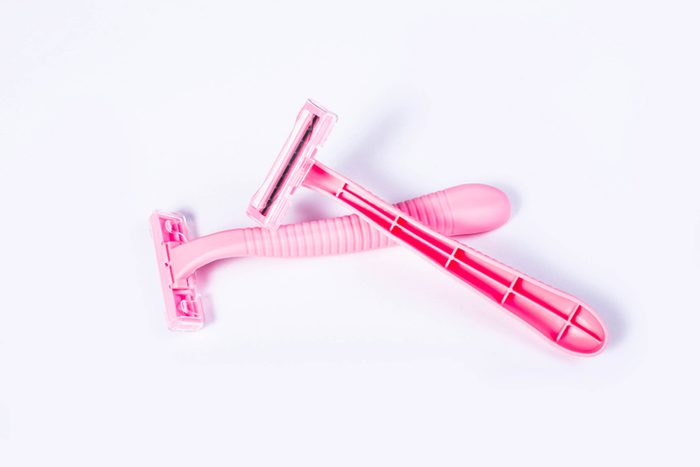
Razor burn
More shaving in summer means you’re more likely to get razor burn, especially in the bikini area. To reduce irritation, use a fresh razor blade and a good shaving cream instead of regular bar soap, says Dr. Papantoniou. You may have heard to shave in the opposite direction your hair grows, but that actually puts you at risk of getting more ingrown hairs, says Dr. Lee. “If you need to repeat passes, that’s totally fine, but it’s a lot less irritating to go with the grain,” she says. After you’re done, clean the area with a little rubbing alcohol, says Dr. Papantoniou. Then rub sensitive-skin deodorant on the area, which is an unusual but effective way to prevent red bumps, she says.
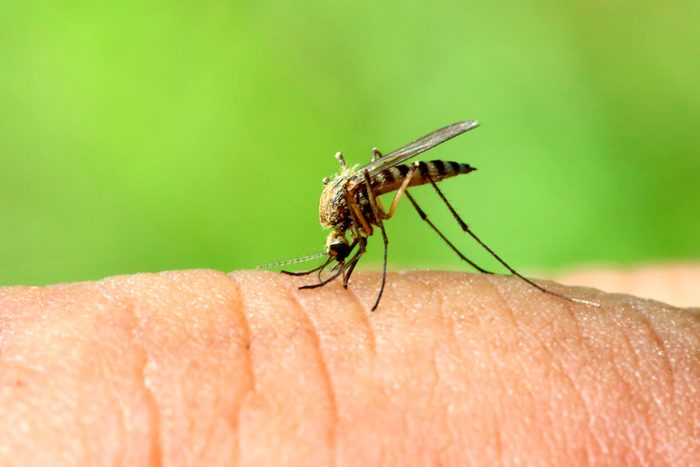
Bug bites
Don’t even think about scratching that itchy bug bite. Scratch it open, and the bite will take longer to heal and could leave a dark brown mark when it’s gone. “The more you scratch, the itchier it will become. That’s because the more you damage it, the more sensitive the nerves become,” says Dr. Papantoniou. Instead, use a cooling gel or anti-itch spray, or hold an ice pack on it while you distract yourself, she says. If you’re generally sensitive to bug bites, take an allergy medicine like Claritin throughout the summer, she says. It won’t help your current itch, but your future reactions won’t be as bad.
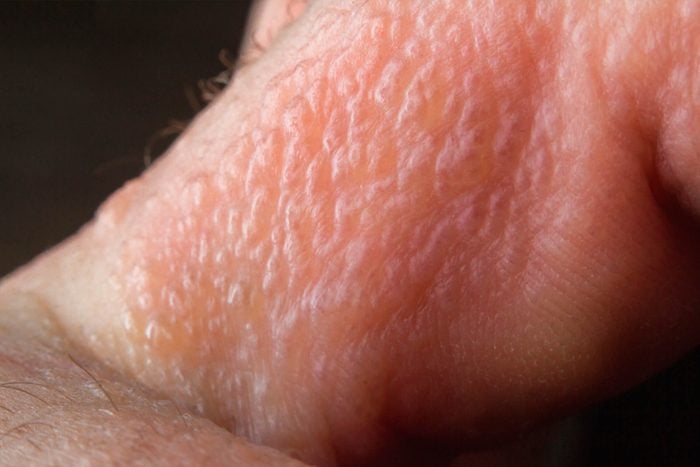
Poison ivy rash
It’s so easy to spread poison ivy—even touching something else that touched the plant could give you a rash (like your dog or cat). As soon as you think you’ve been exposed, take a shower and wash your clothes and anything else that could have the plant’s oily, rash-inducing resin on them. Just avoid scrubbing or hot water, which could irritate the rash even more, says Dr. Papantoniou. Once you’ve dried off, rub on a hydrocortisone ointment, and apply it twice a day until the rash is gone. As tempting as it is to scratch, resist the itch. “If you have a really miserable area that’s terribly itchy, you can put a cool compress on it,” says Dr. Papantoniou. She also recommends Caladryl lotion (calamine with Benadryl mixed in) or an allergy medication like Claritin or Zyrtec to reduce overall itchiness.
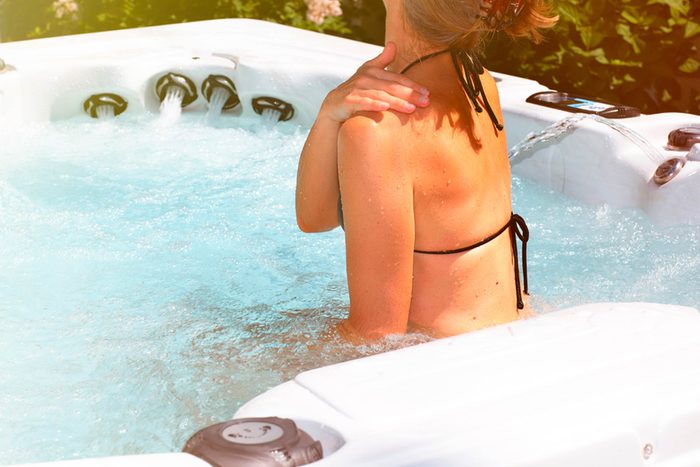
Hot tub rash
There’s a hidden danger lurking in your hot tub. If Pseudomonas aeruginosa bacteria are living in the water, you could end up with hot tub folliculitis. If you develop itchy, acne-like bumps all over your body after a soak, head to the dermatologist who can prescribe oral medication for the infection, says Dr. Lee. In the future, make sure to keep the chlorine levels and pH levels in check to kill the bacteria.
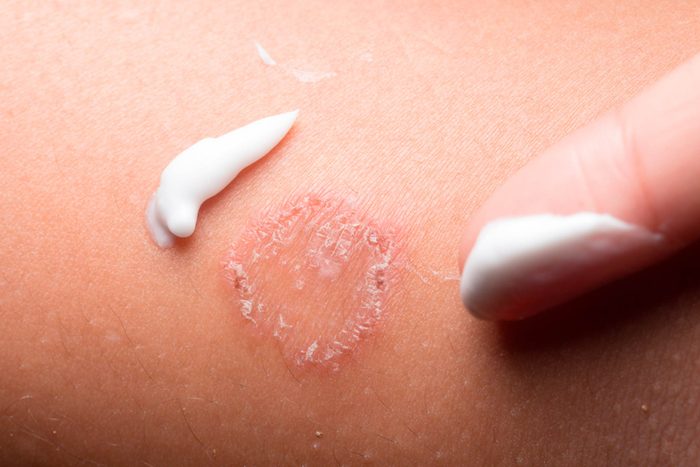
Folliculitis
Hot days mean more sweating, and bacteria love sweaty skin. Bacteria feeding on sweat and dead skin clogging your pores could cause tiny pimple bumps at the hair follicle. Scrubbing the area with a benzoyl peroxide wash could help the bumps clear up slowly and stop new ones from forming, says Dr. Papantoniou, but you can ask your dermatologist for antibacterial lotions to help it clear away even faster. In the future, use a sunscreen designed not to clog pores all over your body, not just your face. Also, shower as soon as you can after sweating, and never re-wear your gym clothes. “Even if it doesn’t smell bad, there’s bacteria on it and sweat that can clog pores,” says Dr. Papantoniou.
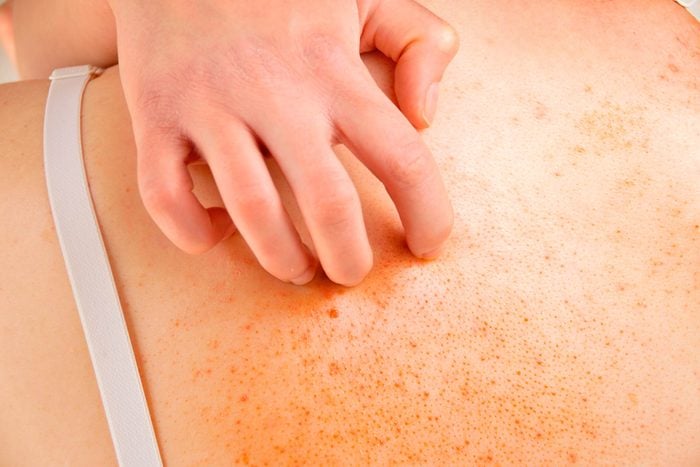
Heat rash
Bacteria cause folliculitis, but blocked sweat ducts can give you inflammation without the infection. As long as you stay out of the heat and humidity, a heat rash usually will go away on its own, says Dr. Lee. Wear loose-fitting clothes to avoid friction against the sweaty spots, and stick with moisture-wicking fabrics when you work out. To relieve the itch, rub on a cortisone cream, says Dr. Papantoniou. “I’d do cream over ointment because you don’t want to clog the area even more,” she says.
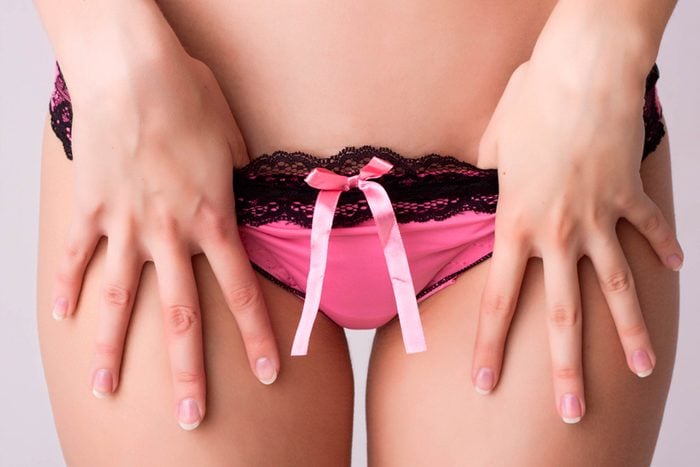
Yeast infections
A vaginal yeast infection can happen any time of year, but skin yeast infections are more common in the summer. Yeast thrives in warm, moist, skin-on-skin areas, like beneath the breasts or belly folds. Keep it away by towel-drying well after a shower, says Dr. Papantoniou. “Don’t rush to get dressed and leave these areas wet,” she says. Also, use a makeup brush to dust anti-fungal powder over the trouble spots, says Dr. Lee. If you do get a flare-up, a powder won’t help, so use an anti-fungal cream instead, she says.
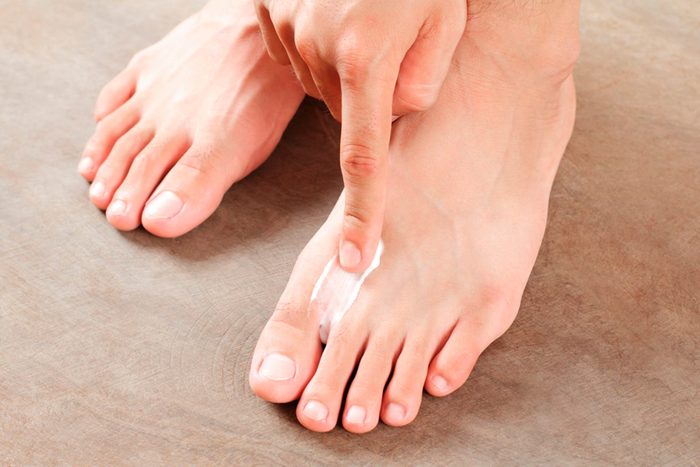
Athlete’s foot
Summer heat makes it even more likely to get this itchy, peeling skin on your feet. Rub an over-the-counter anti-fungal cream between your toes, says Dr. Papantoniou. It could take a couple of weeks for athlete’s foot to clear up, so don’t give up if you don’t see immediate results. Keep it from coming back by putting anti-fungal powder on your feet and in your shoe. If you have particularly sweaty feet, change your socks during the day and reapply the powder, says Dr. Papantoniou.
Next, don’t miss these things dermatologists do every summer.